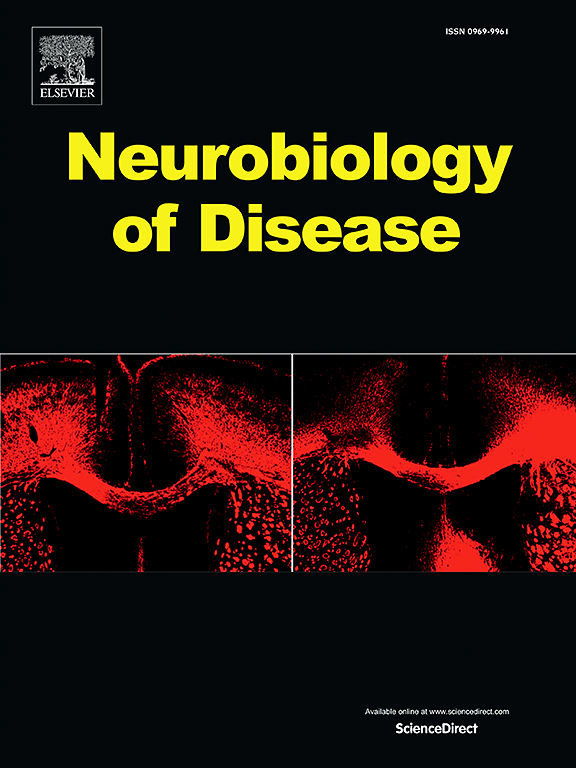神经元间转录组学揭示阿尔茨海默病进展的病理标志物。
IF 5.6
2区 医学
Q1 NEUROSCIENCES
引用次数: 0
摘要
阿尔茨海默病(AD)表现出神经元兴奋和抑制之间的不平衡,可能继发于神经元间功能障碍。为了揭示潜在的介质,我们对5XFAD早期和晚期疾病小鼠与对照小鼠的神经元亚型转录组进行了空间分析。神经元类型的汇总分析显示了早期(RNA和蛋白质加工途径)与晚期(神经退行性途径)疾病的预期途径。早期中间神经元在典型的神经退行性通路中表现出ad相关RNA和蛋白质通路的改变。然而,早期兴奋性神经元显示轴突引导和突触通路的变化,没有神经退行性通路的表征。经典的神经退行性通路仅在晚期兴奋性神经元中出现。而晚期中间神经元则以神经元和突触通路以及细胞、癌症和感染通路为特征。我们的研究结果表明,早期的神经退行性通路涉及中间神经元,仅在后期阶段表现为兴奋性神经元,可能表明早期的抑制性神经元参与。这些转录组谱提供了潜在的阿尔茨海默病病理生理和治疗靶点的见解。本文章由计算机程序翻译,如有差异,请以英文原文为准。
Interneuron transcriptomics reveals pathologic markers of Alzheimer's disease progression
Alzheimer's disease (AD) exhibits imbalance between neuronal excitation and inhibition, likely secondary to interneuron dysfunction. To reveal underlying mediators, we spatially profiled the transcriptome of neuronal subtypes in 5XFAD versus control mice at early- and late-stage disease. Pooled analysis of neuron types showed expected pathways at early-stage (RNA and protein processing pathways) versus late-stage (neurodegenerative pathways) disease. Early-stage interneurons exhibited alterations in AD-related RNA and protein pathways along with canonical neurodegenerative pathways. Early-stage excitatory neurons, however, showed changes in axon guidance and synapse pathways, without representation of neurodegenerative pathways. Classical neurodegenerative pathways were represented only in late-stage excitatory neurons. Late-stage interneurons instead featured neuronal and synapse pathways along with cellular, cancer, and infection pathways. Our results suggest earlier neurodegenerative pathway involvement in interneurons, represented in excitatory neurons only at later stages, possibly indicating earlier inhibitory neuron involvement. These transcriptomic profiles offer insight into potential AD pathophysiology and therapeutic targets.
求助全文
通过发布文献求助,成功后即可免费获取论文全文。
去求助
来源期刊

Neurobiology of Disease
医学-神经科学
CiteScore
11.20
自引率
3.30%
发文量
270
审稿时长
76 days
期刊介绍:
Neurobiology of Disease is a major international journal at the interface between basic and clinical neuroscience. The journal provides a forum for the publication of top quality research papers on: molecular and cellular definitions of disease mechanisms, the neural systems and underpinning behavioral disorders, the genetics of inherited neurological and psychiatric diseases, nervous system aging, and findings relevant to the development of new therapies.
 求助内容:
求助内容: 应助结果提醒方式:
应助结果提醒方式:


